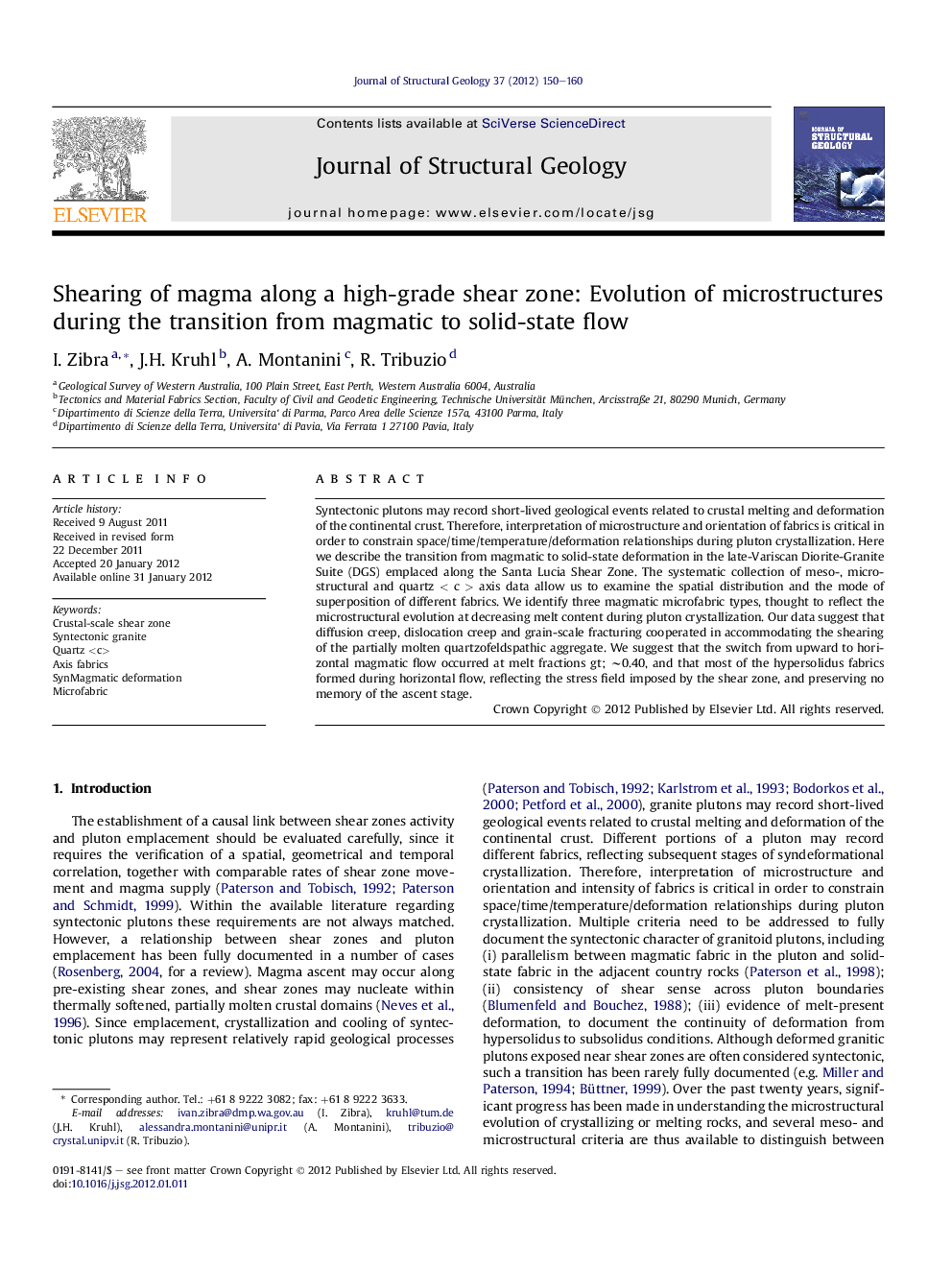| Article ID | Journal | Published Year | Pages | File Type |
|---|---|---|---|---|
| 4733296 | Journal of Structural Geology | 2012 | 11 Pages |
Syntectonic plutons may record short-lived geological events related to crustal melting and deformation of the continental crust. Therefore, interpretation of microstructure and orientation of fabrics is critical in order to constrain space/time/temperature/deformation relationships during pluton crystallization. Here we describe the transition from magmatic to solid-state deformation in the late-Variscan Diorite-Granite Suite (DGS) emplaced along the Santa Lucia Shear Zone. The systematic collection of meso-, microstructural and quartz < c > axis data allow us to examine the spatial distribution and the mode of superposition of different fabrics. We identify three magmatic microfabric types, thought to reflect the microstructural evolution at decreasing melt content during pluton crystallization. Our data suggest that diffusion creep, dislocation creep and grain-scale fracturing cooperated in accommodating the shearing of the partially molten quartzofeldspathic aggregate. We suggest that the switch from upward to horizontal magmatic flow occurred at melt fractions gt; ∼0.40, and that most of the hypersolidus fabrics formed during horizontal flow, reflecting the stress field imposed by the shear zone, and preserving no memory of the ascent stage.
► We describe the transition from magmatic to solid-state flow in a granite pluton. ► We identify 3 magmatic fabric types, reflecting evolution during crystallization. ► Fracturing, diffusion and dislocation creep accommodated melt-present shearing. ► Most of the hypersolidus fabrics formed after pluton emplacement.
